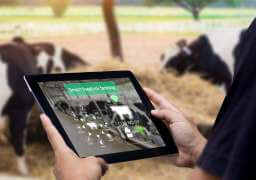When I first heard about Rangers Valley, I was intrigued. What makes it a standout name in the ...
- Home
- Solutions
- Insights
mistEO Insights
Gain valuable insights into the world of climate risk and resilience. Explore our thought leadership, industry reports, and expert analysis.
Insights
Real-World Success Stories – A Deep Dive into Rangers Valley

The Future of Livestock Farming with Climate Decision Intelligence
In a world where climate uncertainty continues to challenge agriculture, innovative solutions a...

The Comprehensive Benefits of CDI Livestock for Farmers and Financial Institutions
Livestock farming is the backbone of countless agricultural economies, especially in developing...

Financial Security for Livestock Farmers with Parametric Solutions
Financial Security for Livestock Farmers with Parametric Solutions Farming has always been an u...
- Company
About mistEO
Discover mistEO, a leader in climate risk management. Learn about our mission, values, team, and how we're committed to building a more resilient future.


- Contact Us















